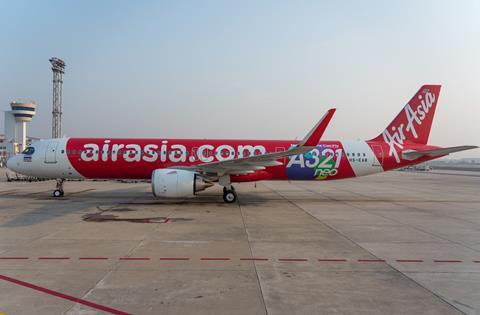Malaysia’s air passenger traffic is expected to contract by 77-80% year-on-year, versus 23-29% predicted in April, before the country entered a three-month-long nationwide lockdown in June.
This translates to 5.3-6.1 million passengers this year, the Malaysian Aviation Commission (MAVCOM) says in the latest edition of an industry outlook report published on 26 August, versus 19-21 million passengers in the previous forecast.

The latest forecast takes into consideration “a lower load factor and a longer period of seat capacity recovery by airlines”.
MAVCOM also details two alternative projections, with 6.9-7.8 million passengers in the best-case scenario and 4.2-4.8 million passengers in the worst-case scenario.
The commission anticipates an increase in domestic, short-haul travel, as movement restrictions are relaxed for fully vaccinated people. Air cargo traffic is also expected grow 27-28% in 2021 and recover to pre-crisis levels.
MAVCOM executive chairman Saripuddin Kasim states: “The aviation industry continues to be the hardest hit by the Covid-19 pandemic. While future trends indicate potential increase in domestic travel as the nation moves closer to reaching herd immunity and travel restrictions are relaxed for fully vaccinated passengers, the recovery rate of the sector remains uncertain.”
“Nonetheless, it is crucial for all stakeholders to be prepared for a new market that will be dominated by price-sensitive leisure travellers. In light of this, the commission expects cost containment and reduction to become top priorities for airlines as well as airport operators.”
Malaysia’s poor second-quarter performance has set back air traffic recovery. 1.3 million passengers flew during the period, compared with 800,000 in the second quarter of 2020.
However, cargo remained a bright spot during the quarter, with total cargo volume growing 80% year-on-year due to high demand for vaccines, medical equipment, personal protective equipment, electrical and electronic components as well as growth in e-commerce.
Malaysia’s main cargo players continued to expand routes, which may indicate a further increase in cargo volume in the near future. Cargo airlines Raya Airways and World Cargo Airline also upgraded their licences to air service licences, which allows airlines to operate scheduled flights.
For the first half of the year, MAVCOM received and approved air traffic rights applications for 34 routes, of which 38% were to China. This compares with 27 routes in the first half of 2020.


























